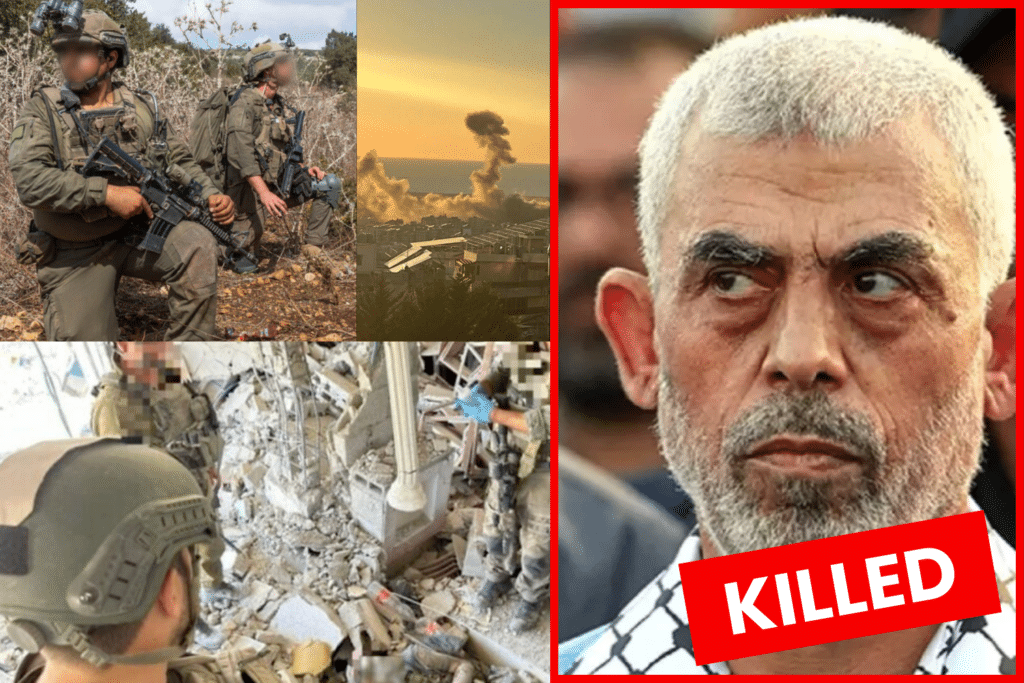
Overview
- Yahya Sinwar, Hamas’s leader in Gaza and mastermind of the October 7th massacre of over 1,200 civilians and security personnel, was killed on October 17th, a year after the October 7th Massacre during an IDF operation in Rafah. Found in a booby-trapped building with cash, fake documents, and weapons, Sinwar was likely attempting to cross into Egypt. His death, confirmed through DNA testing, marked the end of a months-long Israeli intelligence pursuit and dealt a significant blow to Hamas leadership.
- Lebanese MP Razi al-Hajj condemned Hezbollah for using civilians as human shields. Lebanese Prime Minister Najib Mikati calls on Iran not to interfere in Lebanon, showcasing Hezbollah’s growing weakness in Lebanese politics.
- Five IDF soldiers were killed in action in southern Lebanon while clearing Hezbollah military infrastructure.
- Hezbollah launches hundreds of rockets at northern Israel; hits a base in Israel killing 4 and wounding 48 and sends a drone targeting Netanyahu’s residence. Iran denied involvement in the drone attack against Netanyahu’s residence, likely fearing a retaliation by Israel on Iranian leaders.
- Terrorism continues to escalate in Israel. A gunman from Gaza killed a police officer and injured four others in a shooting near the Yavne Interchange on Highway 4. Two days later, militants infiltrated Israel from Jordan, launching a shooting near the Dead Sea. Hamas-affiliated channels glorified the attacks, inciting further violence.
- Iran’s Foreign Minister embarked on a diplomatic tour to Baghdad, Cairo, Amman, and Istanbul, aiming to reinforce regional alliances in preparation for a potential Israeli offensive.
- The U.S. administration has conveyed to Israel that it will suspend all weapons transfers if humanitarian aid is not allowed into northern Gaza.
- The United States and the United Kingdom conducted airstrikes on five underground facilities in Yemen, utilizing strategic bombers.
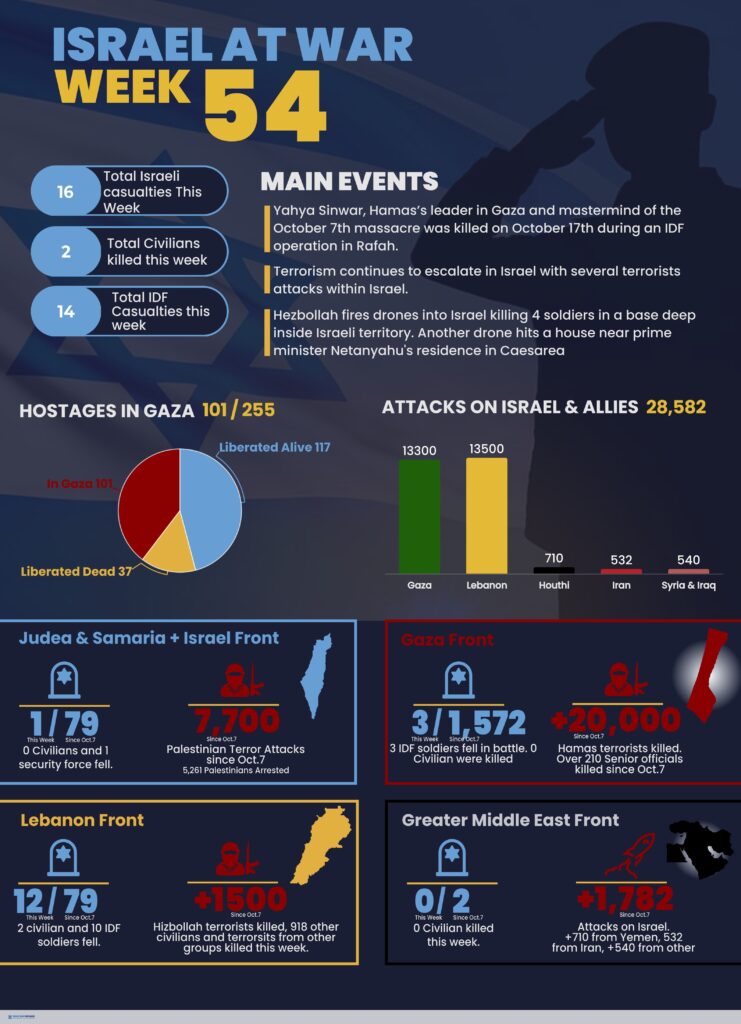
Gaza – Hamas
The Elimination of Yahya Sinwar
Yahya Sinwar, Hamas’s leader in Gaza, known for orchestrating the massacre of over 1,200 civilians and security personnel on October 7th, was killed on October 17th. The encounter occurred during an operation by IDF forces from the School for Infantry Commanders (Bisla”ch), clearing terrorist positions in Rafah. Sinwar, along with two associates, was identified inside a booby-trapped building.
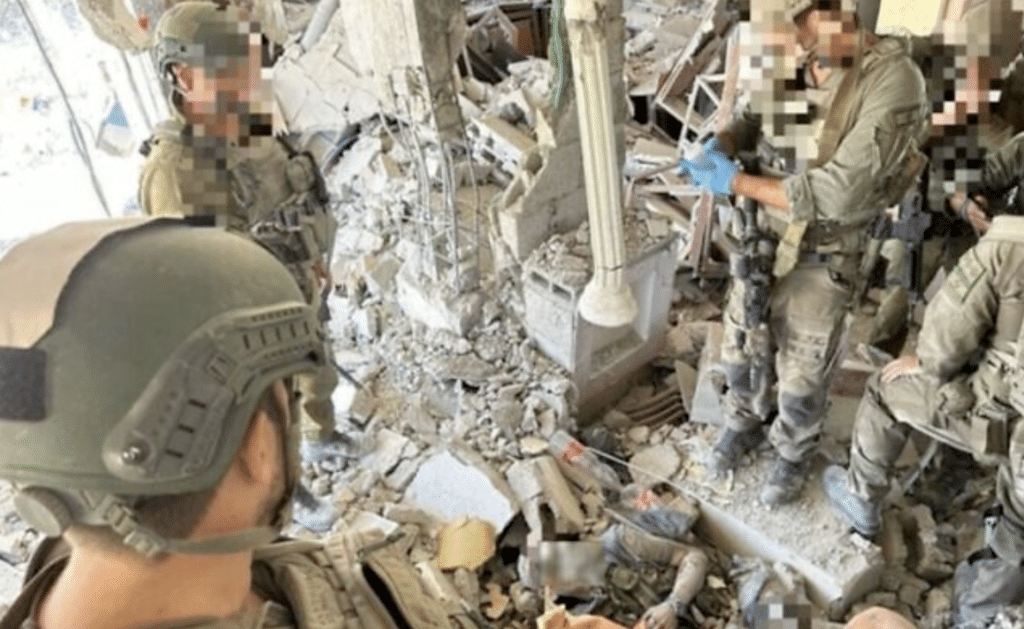
Sinwar’s body was found with cash, identity papers, a fake UNRWA passport, and armed gear, though initial identification required drone reconnaissance. It is believed that Sinwar was attempting to cross the border to Egypt. Further DNA testing confirmed his death. His elimination marked the culmination of a months-long pursuit by Israeli intelligence and a dramatic blow to Hamas leadership in the Gaza Strip.
Footage from October 6, 2023, shows Sinwar escaping with his family into an underground tunnel prior to the massacre on October 7. The footage was discovered a few months ago by IDF and Shin Bet forces.
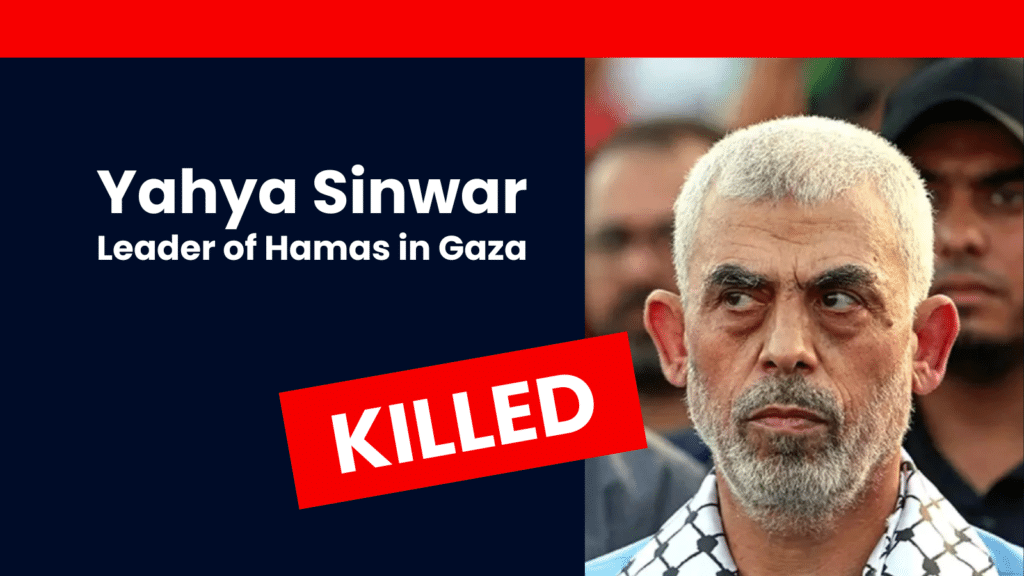
The decision by Israel to launch the Rafah operation was critical, despite international threats of boycotts, arms embargoes, and legal action from the International Court of Justice (ICJ), along with opposition from former Israeli generals. Securing Rafah proved essential for Israel to prevent Hamas leader Yahya Sinwar from escaping into Egypt—possibly with hostages—and relocating to Iran or another hostile country. Capturing Rafah not only sealed Sinwar’s fate, enabling Israel to eliminate him, but also cut off a vital lifeline for Hamas. Without control of Rafah, Hamas could have continued to replenish its stockpile of weapons through smuggling routes, prolonging the war and enhancing its capacity for future attacks. The operation thus served as both a decisive tactical move and a strategic imperative to neutralize a significant threat and curtail the group’s ability to rearm.
Regional Responses and Negotiation Implications
Sinwar’s death sparked significant international responses. U.S. Secretary of State Antony Blinken called it a step toward accountability, stating Sinwar was responsible for massacres on October 7th, affirming U.S. support for Israel. Defense Secretary Lloyd Austin described it as a chance for peace, enabling a ceasefire and displaced residents’ return. National Security Advisor Jake Sullivan highlighted Sinwar’s elimination as an opportunity for regional stability, referring to him as a figure behind mass killings. President Joe Biden, after landing in Berlin, called it “a good day for the world,” expressing hopes for de-escalation.
In the UK and Germany, officials expressed support for Israel’s actions, framing Sinwar’s death as a justified response to terrorism. Commentators from Saudi Arabia and the UAE also welcomed the development, emphasizing the need for regional stability and a reduced threat from radical groups. In contrast, Iran harshly condemned the killing, labeling it a provocation aimed at escalating tensions, which further highlights the differing geopolitical interests within the Middle East region
Khaled Mashal, succeeding Sinwar in Hamas, warned it would hinder hostage negotiations. Meanwhile, Iran pledged that resistance would grow, and protests erupted in Iraq after MBC labeled Sinwar a terrorist, with militants storming the network’s Baghdad office.
Releasing Hostages Opportunity
The elimination of Sinwar presents a unique opportunity to free hostages through innovative strategies beyond traditional deals. With Hamas leadership destabilized, some argue this is the ideal moment to exploit the power vacuum in Gaza to secure hostages. Prime Minister Netanyahu extended an offer of pardon and protection to any Gazans willing to extradite hostages, aiming to turn public sentiment against Hamas. The IDF also dropped leaflets across Gaza, signaling that Hamas no longer maintains control, encouraging residents to act independently. These moves are critical, as they shift the dynamic from negotiating with a unified Hamas leadership to leveraging internal chaos, empowering civilians or rival factions to facilitate the release of hostages. This approach transforms the situation into one where grassroots action and strategic pressure can replace prolonged diplomatic bargaining.
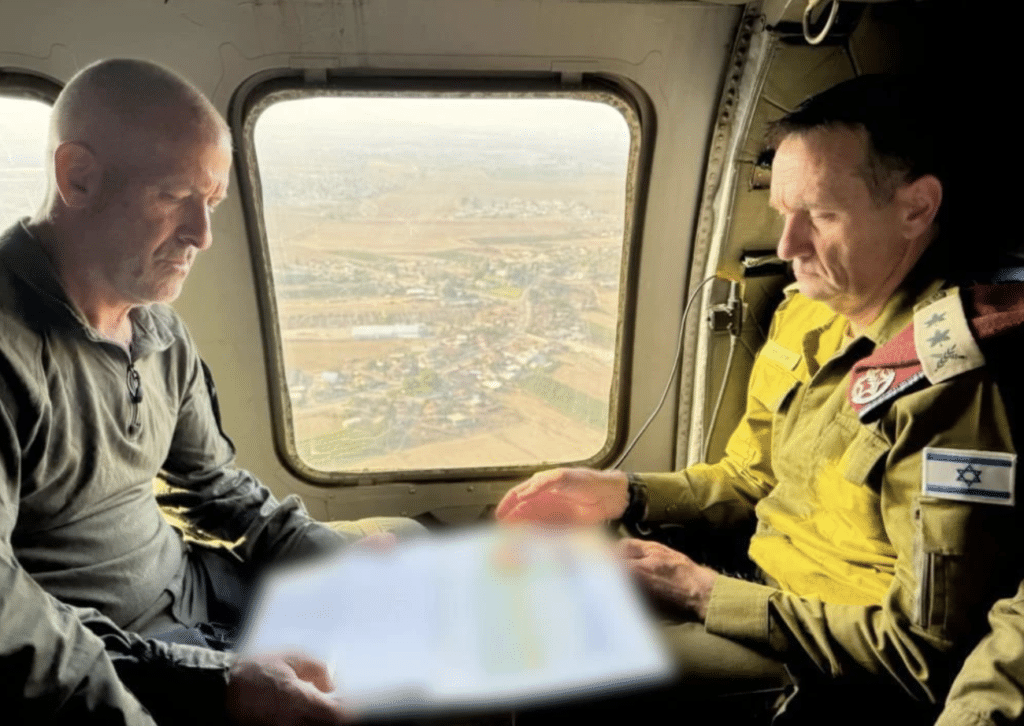
Targeted Strike on Jebalia School Compound
On October 17th, the IDF reported a precise airstrike on a former school compound in the Jabalia refugee camp. The site, identified through intelligence from the IDF Intelligence Directorate, Shin Bet, and Southern Command, housed a command center used by Hamas and Islamic Jihad operatives. Dozens of militants were operating there at the time of the strike.
Among those killed were key figures such as Hussam Salah, Ahmed Hamdouna, Akram Zakul, and Mustafa Ouda, all implicated in recent terror operations. The IDF emphasized that the elimination of these operatives disrupted Hamas and Islamic Jihad’s ability to coordinate further attacks.
Elimination of Hamas UAV Commander Mahmoud al-Mabhouh
On October 16th, the IDF announced the targeted killing of Mahmoud al-Mabhouh, head of Hamas’s unmanned aerial vehicle division in northern Gaza. Al-Mabhouh was instrumental in planning drone operations. His elimination marked a significant blow to Hamas’s ability to launch aerial attacks and demonstrated the IDF’s focus on dismantling Hamas’s strategic assets.
Lebanon – Hezbollah
Hezbollah’s Use of Civilian Shields and Lebanon’s Response
On October 15th, Lebanese Member of Parliament Razi al-Hajj, representing the Christian Lebanese Forces party, raised concerns about Hezbollah’s tactics during a televised interview. Al-Hajj disclosed that senior Hezbollah military officials were hiding among civilian populations, effectively using them as human shields.
These remarks followed an Israeli airstrike on the northern Lebanese village of Itou, in the Zaghtar region, where 23 people were killed, including a high-ranking Hezbollah member stationed there. Al-Hajj called on the Lebanese government, which includes Hezbollah as part of its coalition, to urge the organization to withdraw its military leaders and weapons stockpiles from civilian areas to avoid further tragedies.
He criticized Hezbollah’s exploitation of civilians, comparing it to tactics employed in Gaza, where militants rely on Israel’s restraint toward civilians to conceal themselves. However, al-Hajj emphasized that the situation in Lebanon was changing, with the public increasingly willing to voice their opposition to Hezbollah’s methods through media channels.
Losses in Southern Lebanon: Golani Brigade Casualties
On October 17th, the IDF Spokesperson’s Unit reported the deaths of five soldiers from the elite Golani Brigade during a confrontation in southern Lebanon. The loss of these young soldiers reflects the intensity of the clashes in southern Lebanon, where the IDF continues its operations against Hezbollah forces.
Escalation and International Reactions
The situation in Lebanon took another turn on October 18th, when Lebanese Prime Minister Najib Mikati criticized Iranian Parliament Speaker Mohammad Ghalibaf for remarks published in Le Figaro. Ghalibaf suggested that Iran was open to negotiating with France regarding the implementation of UN Resolution 1701. Mikati described the statement as a blatant and unacceptable interference in Lebanon’s internal affairs.
Meanwhile, tensions between Israel and Hezbollah escalated further. The IDF reported that air units, guided by Division 98, struck Muhammad Hussein Ramal, a Hezbollah commander responsible for several attacks against Israel. Hezbollah retaliated by launching over 150 rockets and missiles at northern Israel, targeting areas such as Haifa and the Galilee, wounding 15 people and killing one.

On October 19th, a drone from Lebanon struck the residence of Prime Minister Netanyahu in the coastal city of Caesarea without triggering alarms. Hours later, the Prime Minister’s Office confirmed the drone had targeted the residence of Prime Minister Netanyahu, though he and his wife were absent.
The drone, identified as the Iranian-made “Shahed 101” loitering munition, suggested deeper Iranian involvement in the operation. Analysts indicated the attack aimed to assassinate Netanyahu, demonstrated Iran’s growing control over Hezbollah activities after its leadership had been eliminated.
In response, Netanyahu addressed the assassination attempt directly with a message that began “The attempt by Iran’s proxy Hezbollah to assassinate me and my wife today was a grave mistake. This will not deter me or the State of Israel from continuing our just war against our enemies in order to secure our future…”
The drone attacks this week continue to emphasize the need for Israel to develop new defense systems to deal with the threat that drones pose to Israel. While Israel is able to shoot down 82% of the incoming drones, there ability to infiltrate Israeli air defense system nearly 20% of the time is a major problem that must be solved
The IDF resumed attacks on Hezbollah strongholds in Beirut’s Dahiya district, despite earlier restraint following a request from the U.S. President Joe Biden to avoid bombing the Lebanese capital. Two additional Hezbollah drones were intercepted, activating sirens at the Glilot military base.
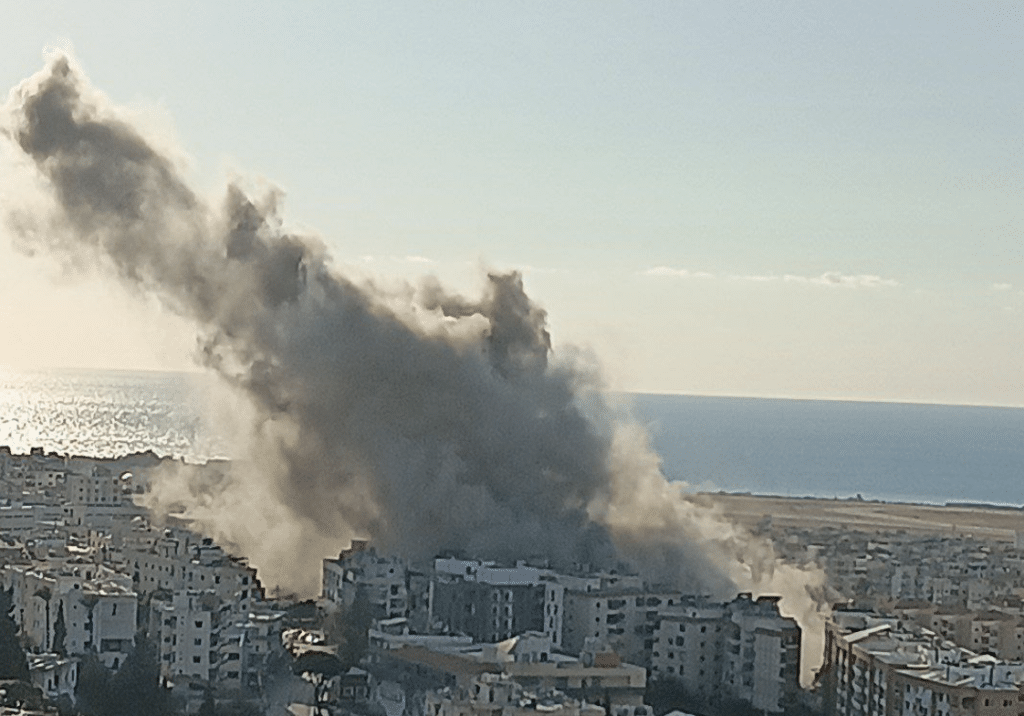
Adding to the diplomatic tensions, the Italian Prime Minister visited Lebanon for discussions with Mikati, while the Italian Foreign Minister canceled his visit to Israel due to the deteriorating security situation. Hezbollah has declared a new phase of confrontation with Israel, hinting at further escalation in the days to come. Meanwhile the IDF continues to clear villages along the border with Israel, finding Hezbollah military equipment, attack tunnels and explosives further providing evidence of the failure of UNIFIL to enforce UN Resolution 1701, which has compelled Israel to take up the responsibility of enforcing the resolution by eliminating Hezbollah’s military infrastructure south of the Litani River.
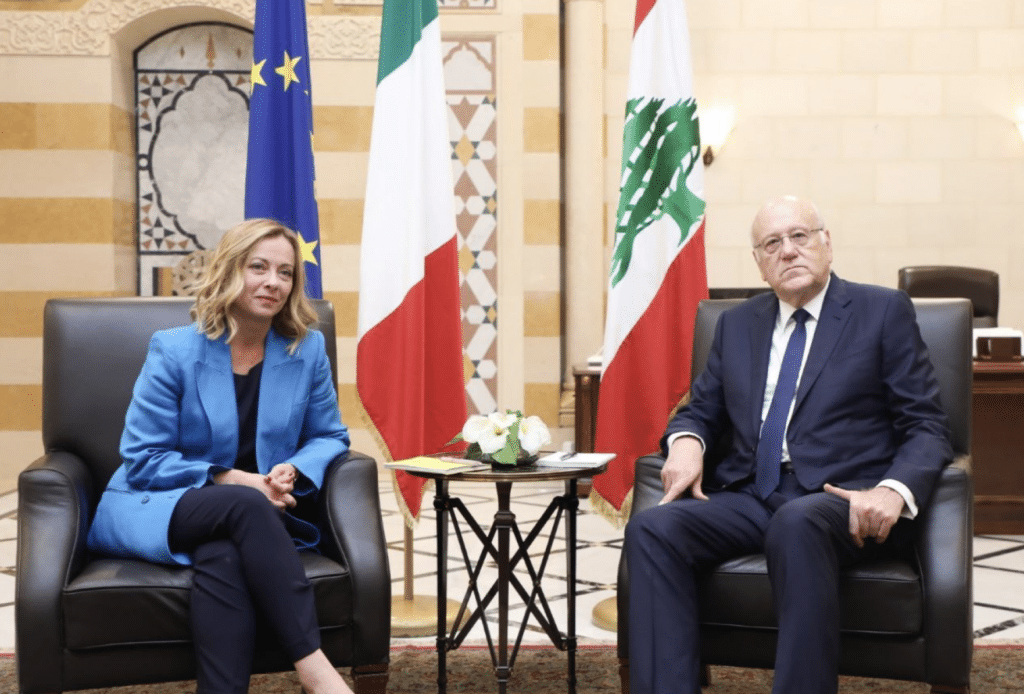
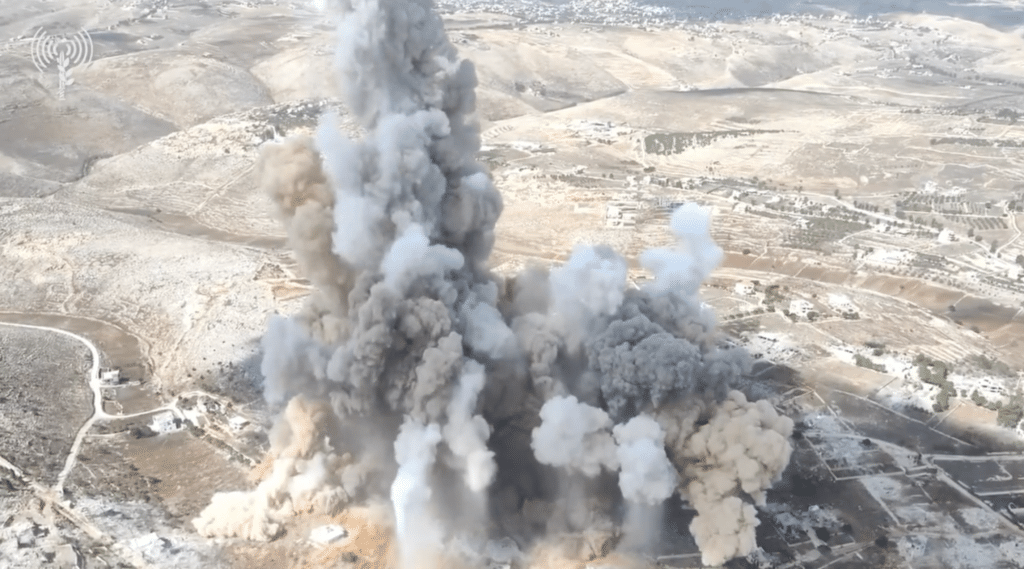
Israel – Domestic / Political
Drone Strike on Golani Training Base
On October 13th, a Hezbollah drone struck the dining hall at the Golani Brigade’s training base near Binyamina, killing four soldiers and injuring 58 others, seven critically. The attack occurred during dinner, with recruits present in the hall.
An IDF investigation revealed that the drone detonated inside the dining hall, causing immediate casualties. Three soldiers died at the scene, while the fourth succumbed to his injuries after evacuation. Helicopters from the Air Force were dispatched to assist in evacuating the wounded, and military mental health officers were sent to support soldiers traumatized by the incident.
The investigation also indicated that the drone had initially been tracked by the IDF until it vanished from radar. Reports suggest Hezbollah launched two drones, likely the “Ziyad 107” model, from Lebanon via the sea. Sky News Arabic reported that the drones were launched under cover of a rocket barrage, while the Saudi Al-Hadath channel claimed one drone fired a missile before exploding. This attack mirrored a previous incident in May, when Hezbollah initiated a coordinated attack using drones alongside missiles near Metula.
Shooting Attack on Highway 4
On October 15th, a gunman opened fire on vehicles near the Yavne Interchange on Highway 4, killing a 30-year-old police officer and injuring four others. Among the injured, a 42-year-old man was moderately wounded, while three others sustained mild injuries. An armed civilian neutralized the attacker, who had been shooting from the roadside.
Palestinian media identified the gunman as Mohammad Darduna from Jabalia, northern Gaza. Following the events of October 7th, the Israeli security community has been intensely scrutinizing how residents of Gaza managed to infiltrate Israeli territory. Some raise the issue of Gazan’s exploiting existing humanitarian crossings or security blind spots. Others raise critical concerns about border security and overwhelmed military response units. It is also possible that Gazans who’ve entered Israel did so before October 7th when Gazan workers entered Israel for work, and stayed in Israel or moved to Judea and Samaria.
Following the attack, Hamas-affiliated channels intensified incitement for more attacks, promoting slogans such as: “Shoot without mercy… A heroic shooting near Ashdod killed an occupation officer and wounded five others. #StrikeYourEnemy.”
Increasing Threats and Political Fallout
On October 17th, Prime Minister Benjamin Netanyahu criticized French President Emmanuel Macron in an interview with Le Figaro. Macron had called for an arms embargo on Israel, stating that the country owes its existence to the UN and should follow its resolutions. Netanyahu condemned Macron’s comments as “shameful” and urged France to align with Israel in combating terrorism, citing shared values between the two nations. Also Gallant condemned him in a tweet, “shame for the French people, a French president calls on embargo not for the first time in history”.
The next day, two militants disguised as Jordanian soldiers , wearing Jordanian military uniforms crossed into Israel from Jordan, launching a shooting attack near the Dead Sea. IDF lookouts detected their infiltration, and soldiers dispatched to the scene neutralized the attackers. Palestinian media later released the attackers’ recorded wills, revealing their motivation to support Gaza. One attacker, Hussam Abu Ghazala, expressed regret at not joining Hamas and urged his children to continue the fight.
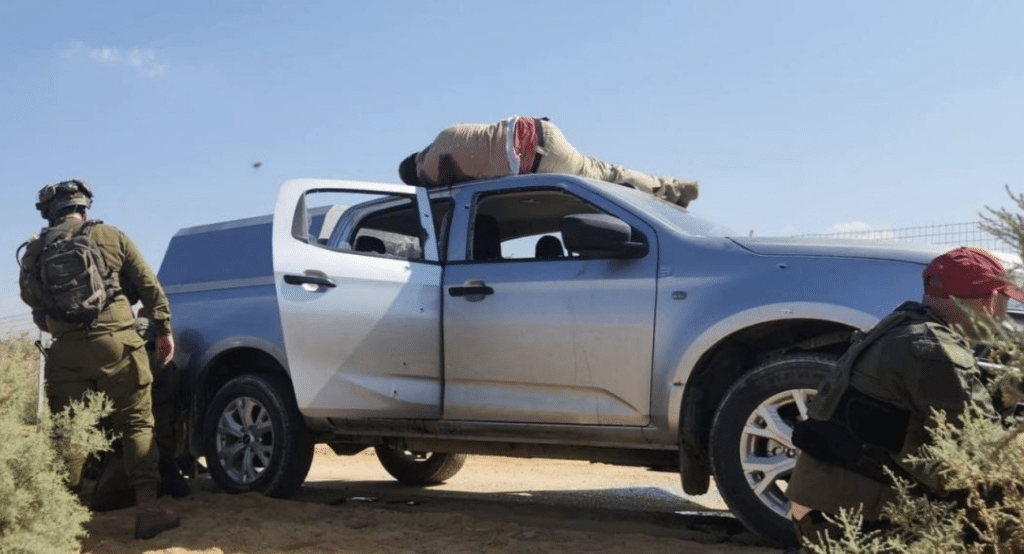
Judea & Samaria
On October 16, security forces thwarted two terror attacks in the Menashe Brigade region of Samaria, according to a joint statement from the IDF, Shin Bet, and Israel Police. In one operation, undercover Border Police officers, guided by Shin Bet intelligence, moved into Jenin to arrest a wanted terrorist planning an imminent attack. The suspect was killed during an exchange of fire, with no casualties among Israeli forces.
In another incident, observers from Unit 636 spotted a suspicious figure near the security fence by Reihan. A response unit from the 7014th Reserve Battalion arrived and arrested the suspect, armed with a handgun and an M-16 rifle.
On October 19, a Palestinian terrorist rammed a police vehicle near the entrance to Ofra. The assailant was neutralized with no injuries reported.
Following these incidents, pro-Hamas channels called for revenge attacks in response to Yahya Sinwar’s killing, fueling unrest across Judea and Samaria. A circulating slogan states: “Freedom is achieved through ramming attacks,” framing the targeting of Jews as a path to liberation.
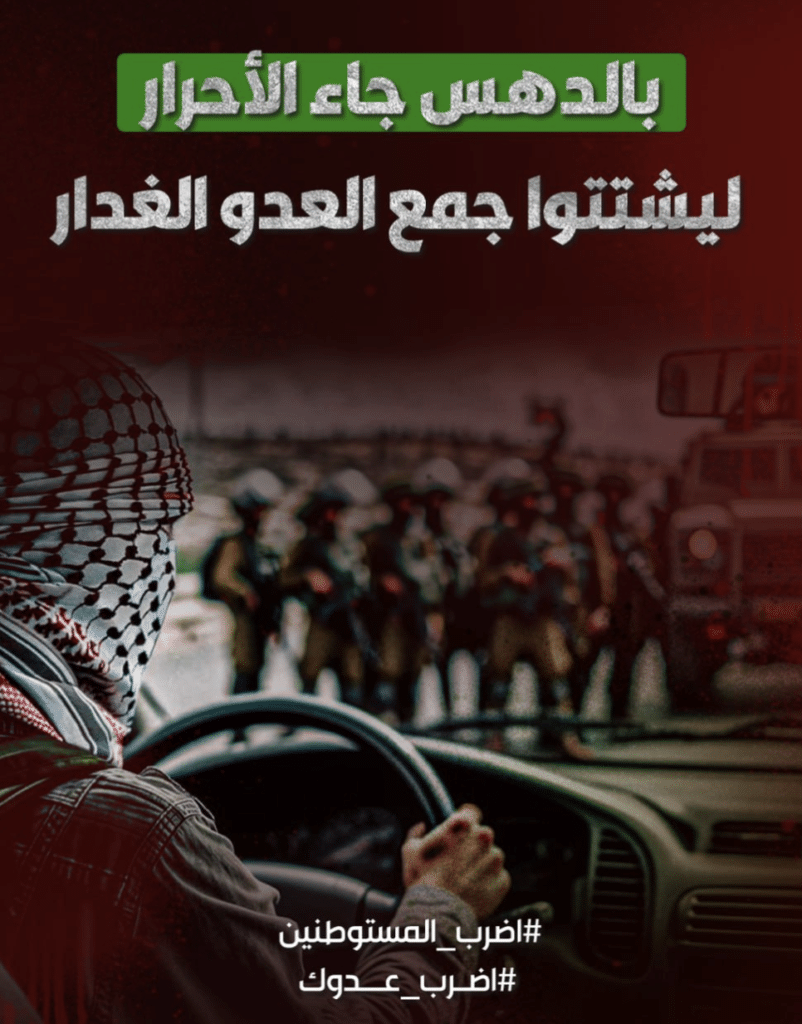
Iran
Iran’s Military Posturing and Diplomatic Assertions (October 13-15, 2024)
Amir-Ali Hajizadeh, commander of the IRGC Aerospace Force, called Iran’s October 1 strike on Israel “the minimum punishment” and warned of further action if needed. Meanwhile, On October 15, the IRGC’s Deputy Commander declared, “Israel is as small as one of Iran’s smallest provinces. If we wish, we can destroy all Zionists.”
Iran’s UN delegation denied a report claiming prior knowledge of Hamas’ October 7 attack, insisting Hamas acted independently. Iranian President Masoud Pazhskian criticized Israel’s actions in Gaza and Lebanon as “violations of international law” and urged Europe to pressure Israel to halt what he called “genocide.” Foreign Minister Abbas Araghchi began a regional tour in Baghdad, where Iraqi leaders expressed hopes for de-escalation despite Shia factions vowing to continue operations independently.
Escalating Diplomacy Amid Regional Tensions (October 16-18, 2024)
Iranian Foreign Minister Abbas Araghchi began a regional tour in Baghdad, where Iraqi leaders expressed hopes for de-escalation despite Shia factions vowing to continue operations independently.
Araghchi continued his diplomatic efforts with meetings in Jordan, where he stressed the need to halt Israel’s “killing machine” and prevent further conflict. He also warned French Foreign Minister Jean-Noël Barrot of the dangers of Israeli escalation and emphasized to UN Secretary-General António Guterres Iran’s readiness to respond to aggression. Araghchi called for humanitarian aid to Gaza and Lebanon and urged the UN to prevent further attacks.
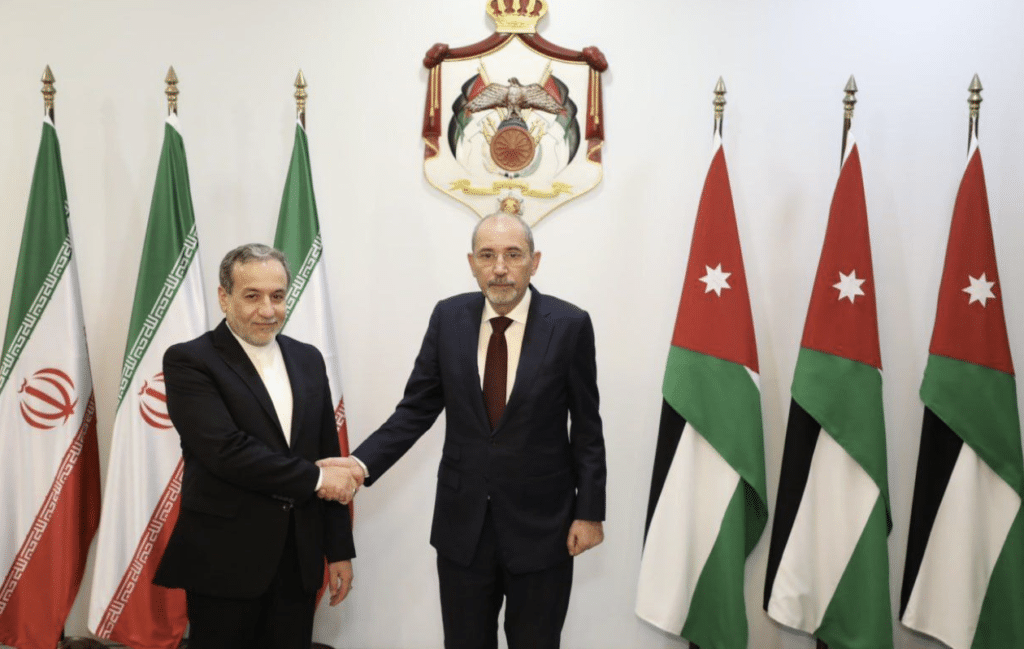
On October 17, Araghchi visited Cairo, marking the first Iranian foreign minister’s visit to Egypt since 2013. He met with Egyptian Foreign Minister Badr Abdel Aaty and President Abdel Fattah el-Sisi. El-Sisi warned of the disastrous consequences of a regional war and urged restraint. Discussions also included a potential visit by President Pazhskian to Cairo.
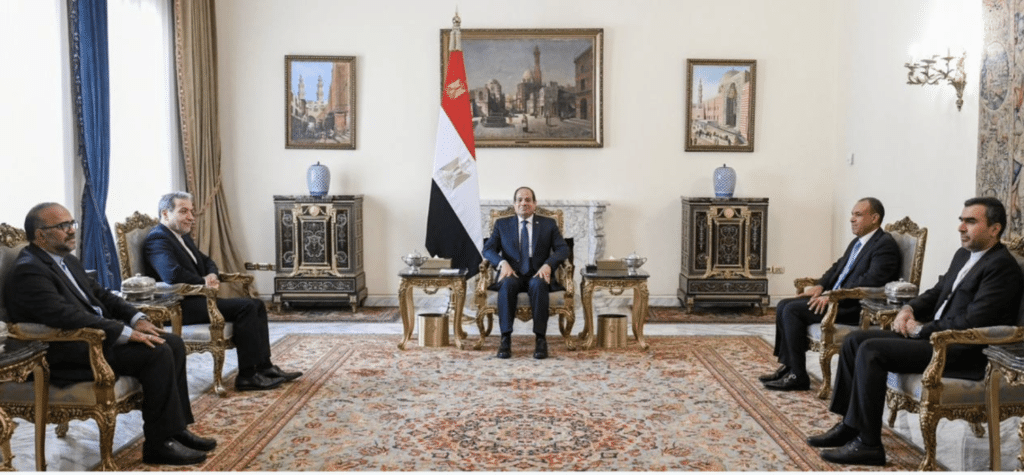
Araghchi concluded his tour in Istanbul on October 18, meeting with Turkish officials and foreign ministers from Russia, Turkey, Armenia, and Azerbaijan. The talks aimed to bolster Iran’s image in the Arab world which has taken a hit as Israel has consistently embarrassed them and their proxies on both the battlefield and through major intelligence blunders. Iran’s shuttle diplomacy efforts are aimed at presenting regional support for Iran as they prepare for future escalations with Israel. and is designed to send a not so subtle message to western leaders that escalations against Iran will lead to a greater regional conflict.
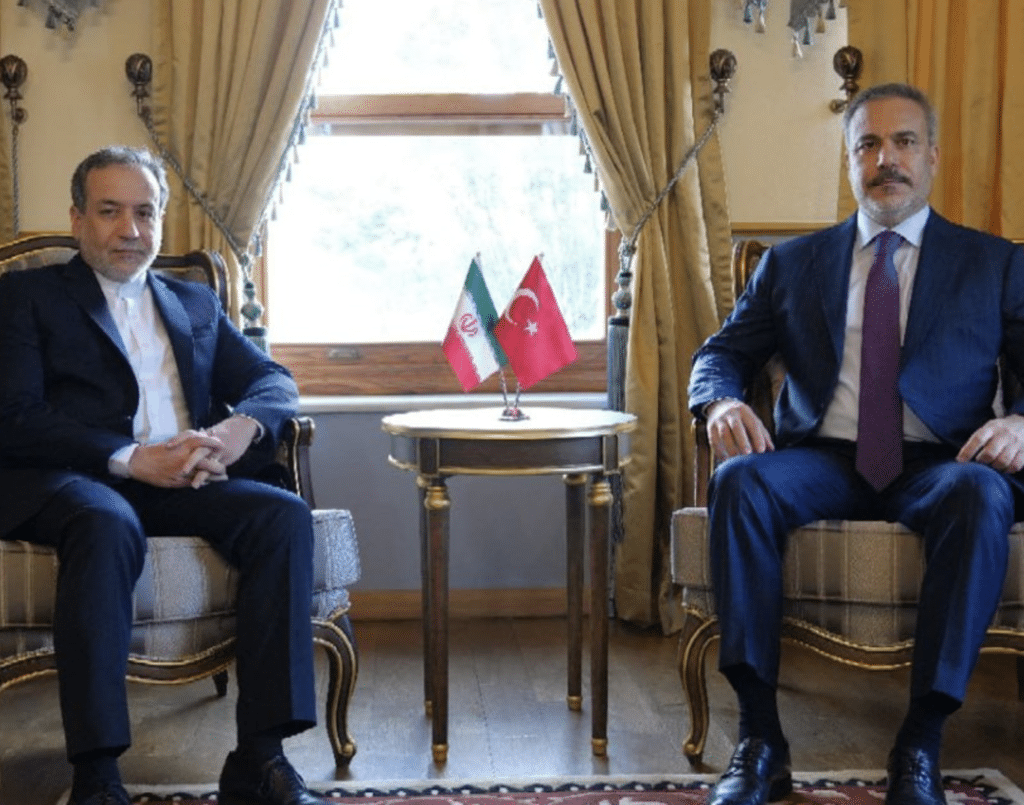
United States
On October 13th, U.S. Secretary of State Antony Blinken and Defense Secretary Lloyd Austin sent a letter to Israel Defense Minister Yoav Gallant and Strategic Affairs Minister Ron Dermer which they then leaked to the media demanding that Israel improve the humanitarian conditions in Gaza within 30 days, or the Biden administration will be compelled to invoke the National Security Memorandum which would state that Israel is in breach of assurances it had made to the US and would trigger legal measures including halting the transfer of arms to Israel under U.S. aid regulations.
That same day, President Joe Biden addressed Congress in a formal letter, updating lawmakers on U.S. actions in response to the escalating war in the Middle East. “In recent months, we have recalibrated our military posture to better protect our forces and enhance Israel’s defenses,” Biden explained, outlining a series of deployments, including destroyers, fighter squadrons, and a submarine. He further disclosed that the U.S. had authorized the deployment of a ballistic missile defense system to Israel, accompanied by American personnel capable of operating it, ensuring readiness against potential missile attacks.
Meanwhile, U.S. officials believe they have secured assurances from Israel that it will refrain from striking Iranian nuclear or oil facilities in response to Iran’s recent ballistic missile attack. Two American sources, speaking to the Associated Press, cautioned that these assurances are not set in stone and may change based on evolving circumstances. While it has been a few weeks since the Iranian Attack on Israel, Israel is showing signs of preparation for an attack on Iran, and nothing is officially off the table. The timing of the attack could be affected by the US elections in November, beefing up the Israeli air defense systems, and other unknown factors.
On October 18th, Secretary Blinken held separate discussions with Saudi Foreign Minister Faisal bin Farhan Al Saud and Qatari Prime Minister Mohammed bin Abdulrahman Al Thani. According to the State Department, these conversations focused on diplomatic efforts to bring an end to the war in the region.
International
United Kingdom
On October 16th, the United Kingdom made an urgent appeal to convene the UN Security Council to address the deteriorating humanitarian situation in Gaza. According to the British Foreign Office, the call was issued in coordination with the governments of France and Algeria. UK Foreign Secretary David Lammy stressed the importance of ensuring civilian protection in Gaza and keeping humanitarian aid routes accessible. “Israel must guarantee the safety of civilians in Gaza and ensure that aid can flow unimpeded,” Lammy urged.
Germany
German Chancellor Olaf Scholz defended his country’s ongoing military support for Israel, affirming that additional arms shipments will continue. “There are, and will be, future deliveries,” Scholz declared. He also issued a stark warning to Iran, stating, “We will not tolerate missile attacks against Israel from Iran. Tehran is playing with fire.”
France
In a related development, France decided to block the participation of Israeli companies in the upcoming Euronaval maritime defense exhibition, scheduled to take place in Paris next month. This decision follows a similar move in June at the Eurosatory defense exhibition, where Israeli companies were barred, and even Israeli nationals were denied entry. However, in the earlier case, after a legal challenge, a French court reversed the ban. It remains to be seen whether a similar appeal will be filed for Euronaval.
European Union
Josep Borrell, the European Union’s foreign policy chief, expressed skepticism about a U.S. warning to Israel, which conditioned future arms deliveries on improving Gaza’s humanitarian conditions within a month. Borrell criticized the timeline, stating, “The measure is insufficient—far too many lives will be lost during that time.” He added his hope that the UN Security Council would deliver a strong condemnation of what he described as Israel’s attacks on UNIFIL positions.
Russia
On October 17th, Russia’s Foreign Ministry issued a stern warning to Israel, cautioning against any consideration of military strikes on Iranian nuclear facilities. Moscow’s statement conveyed a clear message: any such actions would provoke serious consequences. These developments reflect the growing tensions between global powers over the unfolding situation in Gaza and the broader regional implications of the war.
Jordan
King Abdullah of Jordan conveyed a clear message to Iranian Foreign Minister Abbas Araghchi during their discussion, emphasizing that Jordan will not become a stage for regional conflicts. He stressed the urgency of halting Israel’s military operations in Gaza and Lebanon as a crucial first step toward restoring calm and stability in the region.
Egypt
Egypt’s Foreign Minister, Badr Abdel Aty, criticized Europe’s divided stance on Gaza and Lebanon, warning it sends the wrong message to Israel and Arab states. On the same day, President Abdel Fattah el-Sisi reshuffled Egypt’s intelligence leadership, naming Abbas Kamel as his personal advisor and appointing Hassan Mohamed Rashad as the new intelligence chief, signaling a strategic shift.
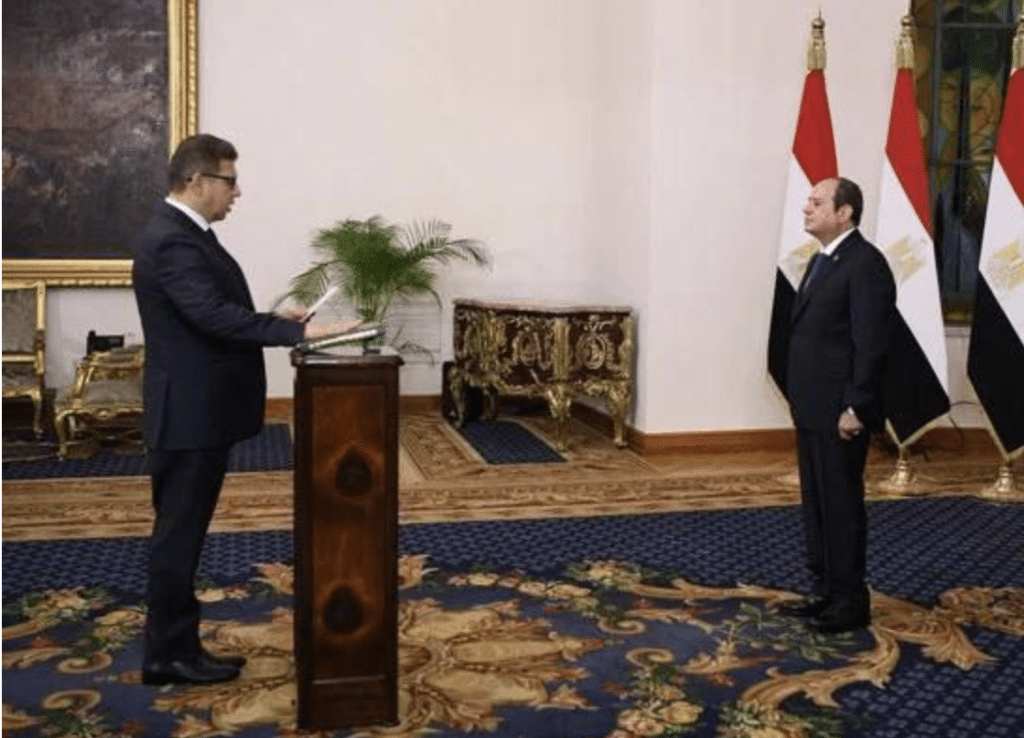
Saudi Arabia
On October 15th, Saudi Crown Prince Mohammed bin Salman arrived in Cairo for an official visit. During his stay, he held a significant meeting with Egyptian President Abdel Fattah el-Sisi. The encounter underscored the ongoing diplomatic relationship between the two nations, with both leaders seizing the opportunity to discuss regional developments and mutual interests, reinforcing their strategic alliance.
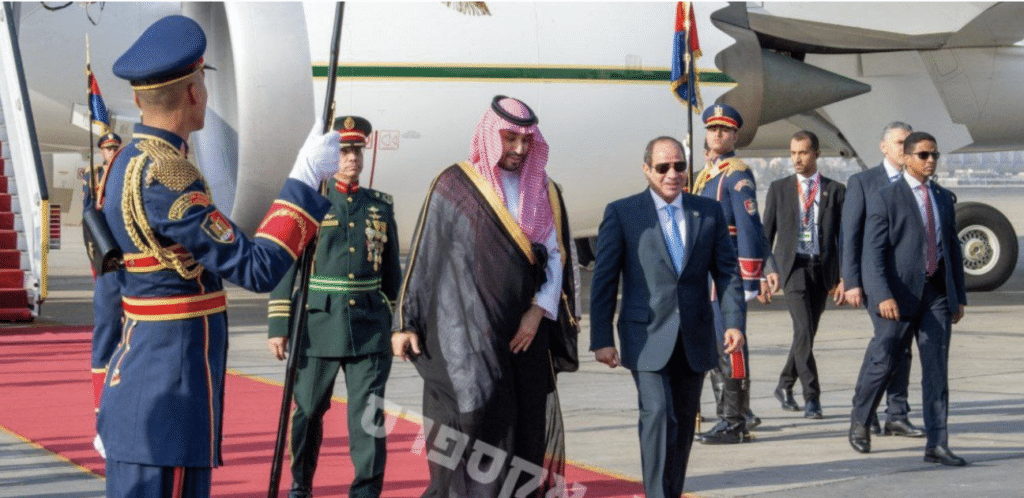
Yemen – Houthis – Iranian Proxy
Houthi military chief Muhammad Abd al-Karim al-Ghamari, along with Houthi Defense Minister Muhammad al-Atifi, issued a public threat, emphasizing their group’s capability to deliver “painful blows and strike at the most sensitive targets.” They reiterated their unwavering support for Gaza and Lebanon through the supply of missiles and drones. In their statement, they vowed that “the flood from Yemen and the Islamic nation will continue until victory is achieved.” Additionally, they pledged to retaliate for what they referred to as “the enemy’s crimes against resistance commanders.”
Reports from Yemeni sources indicated that the United States had conducted 15 airstrikes across Yemen, targeting locations in the capital, Sana’a, as well as the northern province of Saada. According to the U.S. Department of Defense, five underground targets were hit in these operations. The strikes also marked the first operational use of the strategic B-2 stealth bomber in the region.
This sequence of events reflects escalating regional tensions, highlighting both the Houthis’ increasing involvement beyond Yemen and the intensification of U.S. military activities within the country.
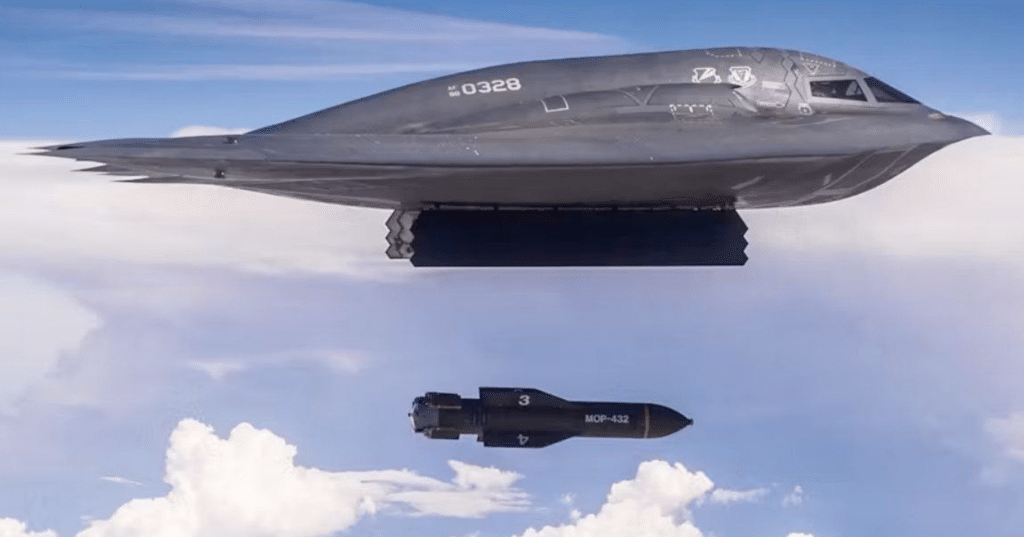
Syria & Iraq – Iranian Proxies
Iraqi militia sources warned that fighters were ready for suicide attacks in Lebanon, pending a “green light.” Dubbed the “Icon of Weapons,” the strikes aimed to deliver a decisive blow to “their enemies”. Meanwhile, the Assad regime, wary of conflict with Israel, issued military orders restricting pro-Iranian militias and Hezbollah from operating near the Golan Heights, Damascus, and Homs. That same night, Israel reportedly launched an airstrike on Latakia, injuring two civilians. In eastern Syria, militias attacked the U.S. base in Conoco, raising fears of further escalation across the region.
Fallen Soldiers
October 13th (Killed during a Hezbollah drone strike on the Golani Brigade’s training base near Binyamina.)
-
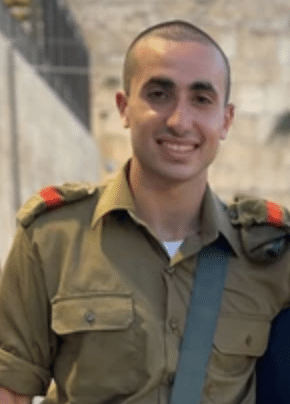
Omri Tamari Source | IDF Website
-
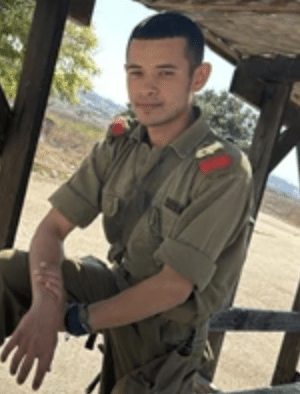
Yosef Haib Source | IDF Website
-
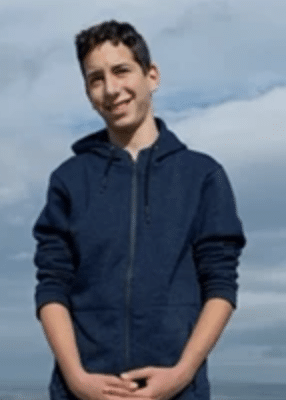
Yoav Agmon Source | IDF Website
-
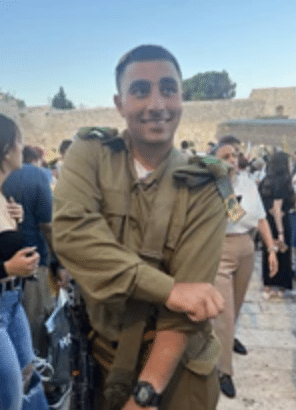
Alon Amity Source | IDF Website
October 17th (Killed in a confrontation with Hezbollah in southern Lebanon.)
-
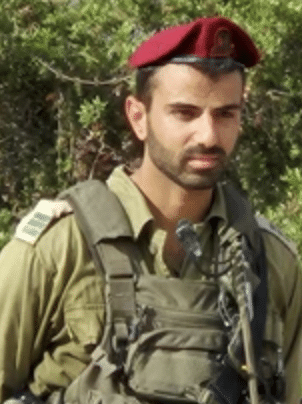
Major Ofek Bachar Source | IDF Website
-
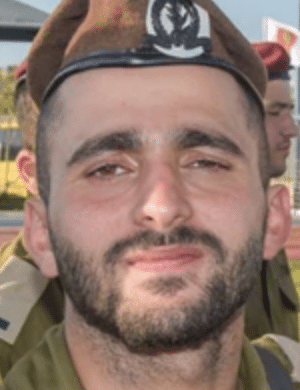
Captain Elad Siman Tov Source | IDF Website
-

Staff Sergeant Elyashiv Eitan Wieder Source | IDF Website
-
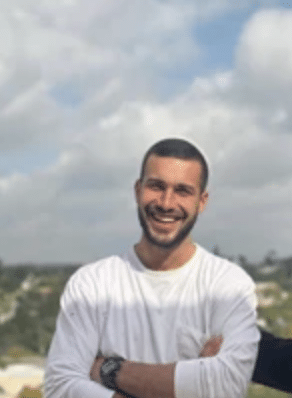
Staff Sergeant Yakov Hillel Source | IDF Website
-

Staff Sergeant Yehudah Dror Yahalom Source | IDF Website
October 18th & 19th (Killed in battle in Northern Gaza)
-
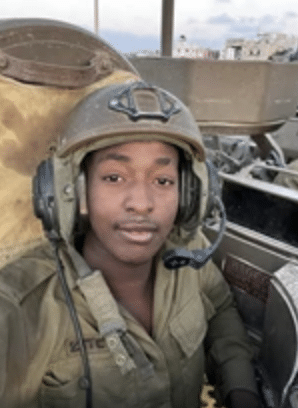
Sergeant Elishi Young Source | IDF Website
-
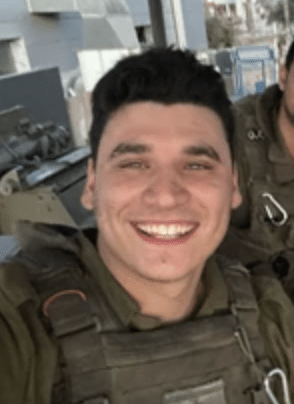
Staff Sergeant Ofir Berkowitz Source | IDF Website
-
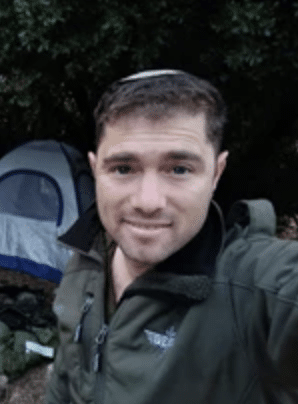
Chief Sergeant Yishai Natan’el Greenbaum Source | IDF Website
Of Blessed Memory

